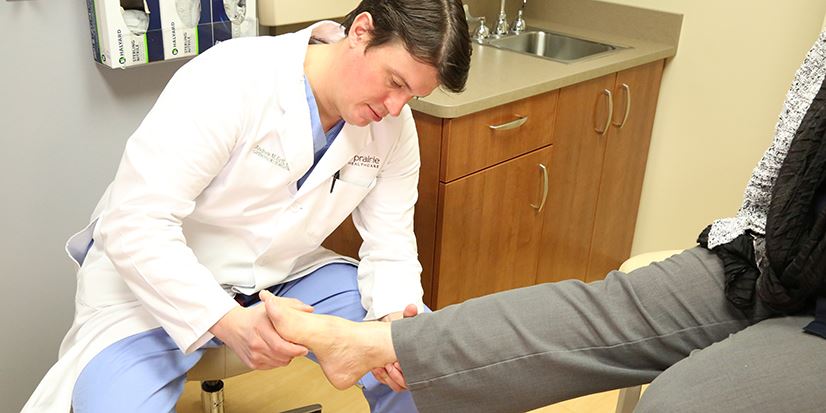Foot Pain Keeping You Down? How to Deal with Plantar Fasciitis
- Category: News, Ortho Sports Medicine, Sports Medicine, Orthopedics
- Posted On:

Most people don't realize how much they rely on their feet until they're in serious pain. Any kind of pain can disrupt your day, but foot pain just might be the worst.
According to the American Academy of Orthopaedic Surgeons, plantar fasciitis is the most common cause of pain on the bottom of the heel. Approximately 2 million patients are treated for this condition every year. Plantar fasciitis occurs when the band of tissue that supports the arch of your foot becomes irritated and inflamed.
What causes plantar fasciitis?
Dr. Andrew Ertl, an orthopedic surgeon at Sauk Prairie Healthcare, says plantar fasciitis is likely to occur when you have tight calf muscles. Having tight calf muscles can make it difficult to flex your foot.
“Inflammation can occur when you walk — basically any time you simply go up on your toes and ball of your foot,” said Dr. Ertl. “Even standing for long periods of time can cause inflammation. Increased activity, like running or playing sports, can increase the risk. Repeated strain of the plantar fascia can cause chronic irritation, and that’s when people are usually ready to do something about it.”
Dr. Ertl joined Sauk Prairie Healthcare in the fall of 2016 as an orthopedic surgeon. He treats general orthopedic needs across all age groups. Additionally, Dr. Ertl has advanced, specialized training in foot and ankle surgery. This enables him to treat all foot and ankle problems ranging from hammertoe and bunions to heel and arch pain and ankle replacement.
When is surgery an option?
Dr. Ertl stresses that people should exhaust all options before opting for surgery.
“This is something I usually don’t recommend people have surgery for until it has been an issue for nine months to a year,” said Dr. Ertl. “It can go away on its own. While I don’t want my patients to live with pain, I do recommend that they give it some time, with at-home treatment, to see if the inflammation subsides.”
The outpatient surgical procedure to help repair plantar fasciitis is called gastrocnemius recession. It is a lengthening of the calf muscle that requires a small incision in the back of the leg. The procedure has a high success rate.
“I’ve found that patients have no pain to minimal pain three to six months after the surgery,” said Dr. Ertl. “Patients wear a boot for about two weeks and they are back in a normal shoe afterwards. High-impact activities are limited for about two months following surgery.”
How can you ease the pain of plantar fasciitis at home?
In addition to seeing a physical therapist for a personalized program, Dr. Ertl suggests a few ways for people to treat plantar fasciitis at home:
- Rest
- Ice
- Calf stretches
To stretch your calf muscle:
- Stand at the edge of a stair
- Hold onto the railing
- Lower the heel down
- Hold this stretch for 10-15 seconds
- Repeat a few times
Another helpful tip: Stretch and ice at the same time.
- Empty a soda bottle
- Fill with water
- Freeze
- Roll foot across frozen bottle
